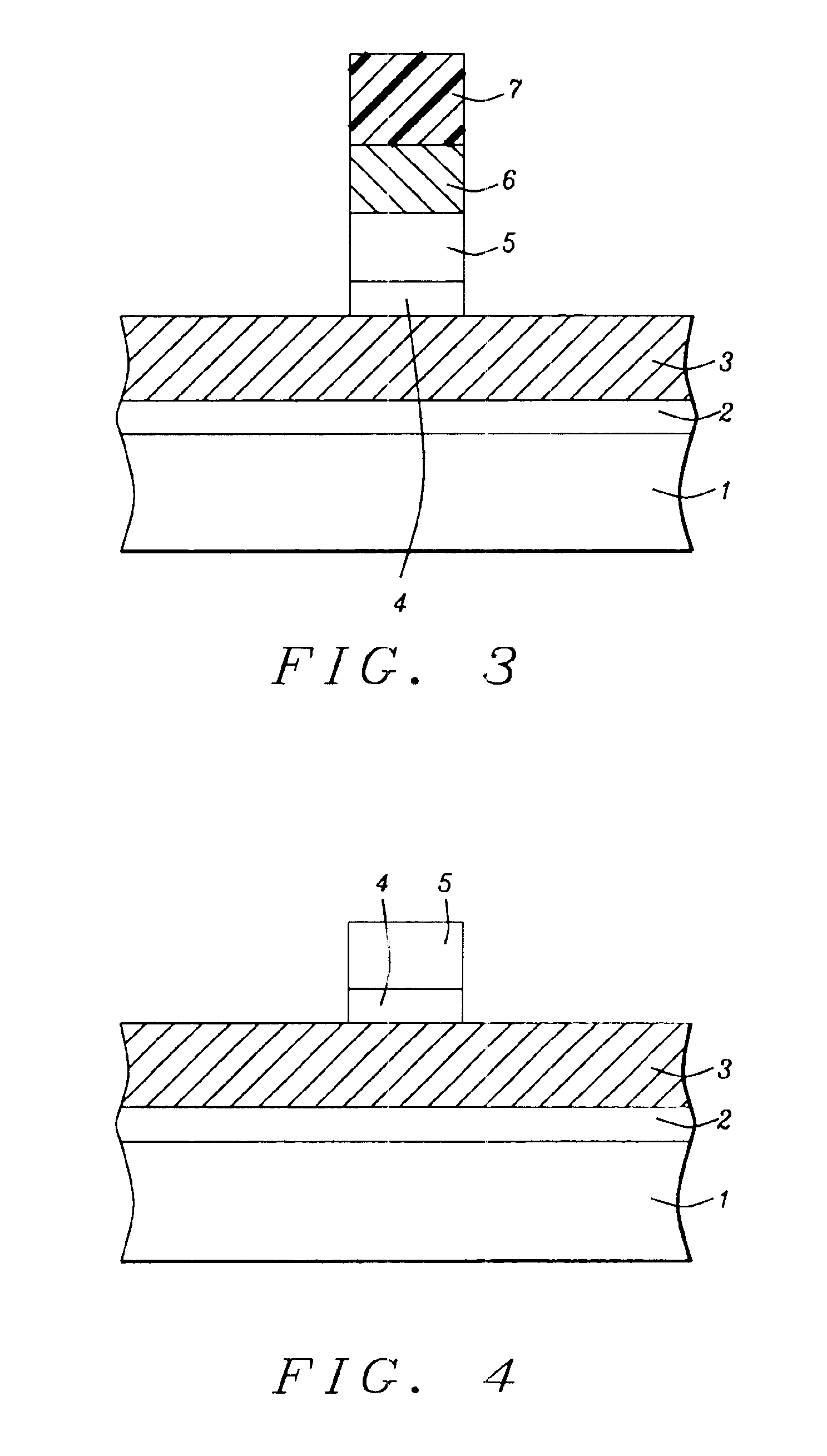Phosphoric acid free process for polysilicon gate definition
a technology of polysilicon gate and phosphoric acid, which is applied in the direction of semiconductor devices, basic electric elements, electrical equipment, etc., can solve problems such as yield loss, and achieve the effect of preventing particle contamination and improving the control of critical dimensions
- Summary
- Abstract
- Description
- Claims
- Application Information
AI Technical Summary
Benefits of technology
Problems solved by technology
Method used
Image
Examples
Embodiment Construction
ectional style, describe key stages used to define a MOSFET polysilicon gate structure wherein a dual ARC coating, used to enhance dimension control of the polysilicon gate structure, is removed without the use of hot phosphoric acid.
DESCRIPTION OF THE PREFERRED EMBODIMENTS
[0013]The method of defining a polysilicon gate structure for a MOSFET device wherein a dual ARC coating is employed as a component of the defining photolithographic procedure, and wherein the dual ARC coating is removed without the use of hot phosphoric acid, will now be described in detail. Semiconductor substrate 1, comprised if P type single crystalline silicon featuring a crystallographic orientation, is used and schematically shown in FIG. 1. Gate insulator 2, comprised of a gate dielectric layer such as thermally grown silicon oxide, silicon oxynitride, nitrogen doped silicon oxide or a high dielectric constant (high k) layer, is formed to a thickness between about 6 to 80 Angstroms on semiconductor substr...
PUM
 Login to View More
Login to View More Abstract
Description
Claims
Application Information
 Login to View More
Login to View More - R&D
- Intellectual Property
- Life Sciences
- Materials
- Tech Scout
- Unparalleled Data Quality
- Higher Quality Content
- 60% Fewer Hallucinations
Browse by: Latest US Patents, China's latest patents, Technical Efficacy Thesaurus, Application Domain, Technology Topic, Popular Technical Reports.
© 2025 PatSnap. All rights reserved.Legal|Privacy policy|Modern Slavery Act Transparency Statement|Sitemap|About US| Contact US: help@patsnap.com



